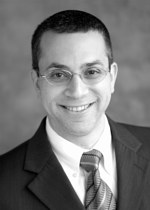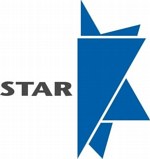Synaplex: A Creative Response to a Decline in Synagogue Identification
by Oren Lee-Parritz
 According to this year’s National Rabbinic Survey, declining involvement in Jewish activities was cited as the most pressing issue. Whereas Israel-related topics were at the forefront in previous years, a recent lull in the conflict has cleared the way for a focus on community concerns.
According to this year’s National Rabbinic Survey, declining involvement in Jewish activities was cited as the most pressing issue. Whereas Israel-related topics were at the forefront in previous years, a recent lull in the conflict has cleared the way for a focus on community concerns.
This survey also concluded that a great many Rabbis (92% of participants) found it necessary to reach out to previously under-included segments of the Jewish community such as gays, lesbians, interfaith couples, singles, and single parents.
 STAR (Synagogues: Transformation and Renewal) is a project designed to help temples cope with changing trends in society, maintain professional growth among their leaders and Rabbis, and to help boost membership and attendance. According to their website, “STAR works with synagogues to bridge the chasm between the American Jewish Community and the synagogue”.
STAR (Synagogues: Transformation and Renewal) is a project designed to help temples cope with changing trends in society, maintain professional growth among their leaders and Rabbis, and to help boost membership and attendance. According to their website, “STAR works with synagogues to bridge the chasm between the American Jewish Community and the synagogue”.
Synaplex is STAR initiative that focuses on a three pronged approach to reestablishing the synagogue as the center for a Jewish community. According to their website: “While most Jews think of a synagogue as Beit Tefilah — a house of prayer, a synagogue is also Beit Midrash — a house of learning, and Beit Knesset — a house of gathering.” By re-affirming these other roles that the synagogue is to play, it is believed that more people will be drawn to one of these aspects and thus further identify with it.
According to Rabbi Hayim Herring, it is essential to focus on the “synagogue as a communal center” as the main goal. While it is desirable that people become more religious, reinforcing the community is viewed as the crucial first step. Furthermore, Synaplex strives to include the groups mentioned above that have previously been overlooked.
The movement is multi-denominational, though most of its adherents are reform. A smaller portion of participants are conservative with a handful of participating congregations describing themselves as Orthodox.
Much of this community building is accomplished by “casting a wider net” to the diverse American Jewish population via offering an array of temple activities. These include but are not limited to expanded social events and study groups. Some alternatives include meditation workshops and yoga. One interesting development is “Rosh Chodesh: It’s a Girl Thing”. This was established as a way for mothers and adolescent daughters to have a forum to discuss contemporary family issues and to provide support in a Jewish setting during these difficult formative years.
In order to address the issue of lacking a sense of community among the congregants, some of the participating temples have initiated “a speed schmooze” in order to have members get to know each other better and thus feel more at home at the synagogue.
Temples participate by gaining access to resources that provide ideas and networking tools. The guidelines set forth by the program are by no means rigid and give the Rabbi suggestions, as opposed to a strict program, allowing the leader to act within the comfort level of the current congregants. Another important resource is the inter-congregational communication network established by STAR and Synaplex that helps Rabbis to work together on the ground level to address pressing issues.
The central pillar of Synaplex is the Shabbat Initiative, a project designed to re-establish the Sabbath as a gathering time for Jews. According to Rabbi Herring, it conveniently falls at a time when most secular Jews would have the time to participate in temple activities, contributing to the potential efficacy of the program.
Initially, there was some resistance to Synaplex as some viewed it as possibly detracting from traditional worship. According to Rabbi Herring, not only were these not the intentions of the program, but they were very carefully designed not to interfere with the traditional services utilized by the original active members. As a result, he contends that many of these initial fears have long since abated.
Other features of Synaplex include PEER (Professional Education for Excellence in Rabbis) to enrich professional practice and “Storahtelling” as an effort “to bring the Torah to life” for those who were not previously interested in bible study. In addition to these features, Synaplex and STAR include a great many other organizational partners that help to augment the experience. Rabbi Herring was also proud to announce that STAR and Synaplex have helped to nurture social action programs evolving from the synagogues.
One interesting aspect of their literature includes their use of the term “marketing”. While many might find such a term distasteful in a religious context, the website is careful to explain that “marketing” does not need to take on a commercial connotation and that advocating participation in any organization is a form of marketing, whether or not we feel comfortable thinking of it in that way.
According to Rabbi Herring, it has been a phenomenal success as they have seen positive results (attendance-wise) for over 100 temples and are still growing. For more information or to find a participating synagogue, please refer to www.synaplex.org or www.starsynagogue.org
